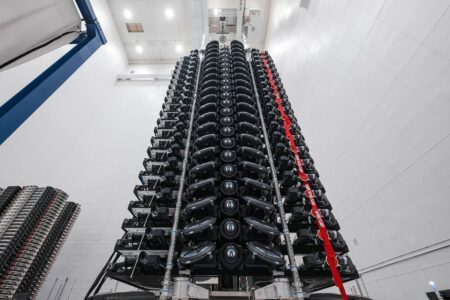The Biden administration is injecting a whopping $7 billion into a strategic initiative focused on hydrogen production. This ambitious endeavor involves the creation of seven distinct “hydrogen hubs” scattered across the United States. At its core, this initiative aligns with President Joe Biden’s overarching vision of transitioning the nation towards sustainable energy sources. However, the environmental merits of hydrogen hinge on a crucial transformation in the way this fuel is traditionally generated.
Hydrogen combustion stands out for its remarkable environmental credentials—it produces only water vapor, in stark contrast to fossil fuels that spew greenhouse gas emissions when ignited. This unique property positions hydrogen as a game-changer in sectors such as aviation, maritime shipping, and heavy industries like steel production. These sectors have traditionally been challenging to decarbonize through renewable energy sources and batteries. Yet, the primary hurdle in harnessing hydrogen’s potential lies in cleaning up the pollution generated during its production. Today, the majority of hydrogen is produced using fossil fuels, and regrettably, a few of these new hubs are expected to continue this practice by relying on natural gas for hydrogen production.
The groundwork for these hydrogen hubs was laid last year by the Biden administration. During his recent visit to Philadelphia, the President is anticipated to reveal the seven chosen locations slated to receive funding under the Bipartisan Infrastructure Law. This monumental investment is projected to trigger an additional $40 billion in private sector investment, as per a White House press release.
Let’s delve deeper into the specifics of these hydrogen hubs:
1. Pacific Northwest Hub (Washington, Oregon, and Montana)
This hub aims to leverage renewable energy sources to produce hydrogen. By tapping into the region’s abundant clean energy potential, this initiative exemplifies the commitment to environmentally friendly hydrogen production.
2. California Hub
In California, this hub will harness both renewable energy and biomass for hydrogen production. This holistic approach underscores the state’s dedication to sustainable practices.
3. Mid-Atlantic Hubs (Pennsylvania, Delaware, and New Jersey) and Heartland Hubs (Minnesota and the Dakotas)
These hubs represent a blend of renewable and nuclear energy sources, demonstrating a diversified approach to hydrogen generation. It reflects the recognition that multiple clean energy avenues can contribute to the decarbonization of hydrogen.
4. Appalachian Hub (West Virginia, Ohio, and Pennsylvania)
In the Appalachian region, hydrogen will predominantly be produced using natural gas. While this approach may raise environmental concerns, the overarching goal is to transition towards cleaner methods as technology advances.
5. Midwest Hub (Illinois, Indiana, and Michigan)
The Midwest hub is set to combine natural gas, renewables, and nuclear energy for hydrogen production. This mix of energy sources signifies a pragmatic approach to achieving hydrogen decarbonization.
6. Texas Gulf Coast Hub
The Texas Gulf Coast hub will predominantly rely on natural gas and renewables to generate hydrogen. Given the region’s energy landscape, this blend aligns with local capabilities.
While the benefits of hydrogen as a clean energy source are undeniable, it’s important to acknowledge the current cost challenges associated with its production using renewable energy. Producing hydrogen through traditional means, primarily from natural gas, remains significantly more cost-effective. The Biden administration has set an ambitious target of reducing the cost by 80 percent, aiming to reach $1 per kilogram by the end of this decade. To achieve this, President Biden authorized the use of the Defense Production Act last year to bolster domestic supply chains for clean energy technologies, including electrolyzers used to split water molecules to produce hydrogen.
An alternative to electrolysis is steam-methane reforming, which involves the reaction of methane (the primary component of natural gas) with steam to produce hydrogen. However, this process still emits carbon dioxide. The plan for the new hydrogen hubs is to implement carbon capture technology to mitigate emissions from gas-based hydrogen production. Yet, it’s worth noting that capturing CO2 emissions, while a step in the right direction, does not address the issue of methane leakage—a potent greenhouse gas associated with gas infrastructure.
Ultimately, the Biden administration envisions these seven hydrogen hubs collectively reducing CO2 emissions by a staggering 25 million metric tons annually. To put this into perspective, it’s roughly equivalent to removing over 5.5 million cars from the road each year. Additionally, clustering hydrogen production in these hubs offers a cost-effective advantage as facilities can share critical infrastructure like pipelines and storage facilities. The initiative also holds the promise of generating thousands of jobs, aligning with President Biden’s “Justice40” Initiative, which ensures that 40 percent of the benefits from federal investments are directed towards marginalized, underserved, and pollution-burdened communities.
As the hydrogen revolution continues to gain momentum, these hydrogen hubs represent a critical step towards a cleaner and more sustainable energy future. While challenges remain, the commitment to innovation and the transition towards cleaner hydrogen production methods mark a promising path forward. Tech enthusiasts and environmental advocates alike are eagerly watching as these hubs come to life, heralding a brighter, greener era in the world of energy production.





